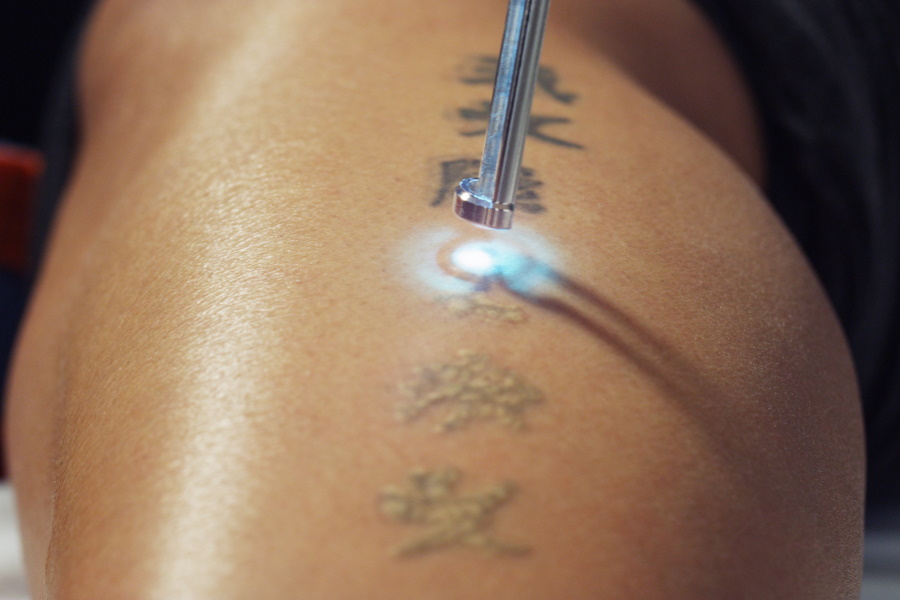
Tattoos have grown trendier in recent years. It’s believed that up to 50 percent of tattooed people have considered having their tattoos erased for various reasons. The thought of getting a tattoo erased, however, might be daunting.
With the advent of modern laser technology, tattoo removal through non-surgical treatments is now accessible.
How Do You Get Rid of a Tattoo?
Tattoos may be erased in Singapore utilizing a laser procedure called PICO laser.
The Pico laser’s high-energy laser beam may enter the skin’s outer layer, shattering and permanently erasing tattoo ink. The broken ink pigments are naturally eliminated by the immune system of the body during the following several weeks. It’s how laser therapy lightens the tattoos slowly over multiple treatments.
Tattoo Removal using Pico Laser: How Effective Is It?
A variety of variables impact laser therapy effectiveness, such as tattoo color, position, density, tattoo ink age, depth, and underlying skin color. Pico laser works effectively on black tattoos in general. Colorful tattoos don’t usually react well to laser therapy. Laser therapy, when conducted appropriately and in accordance with the treatment regimen, may lead to remarkable tattoo fading.
In conclusion, the effectiveness of Pico laser tattoo removal varies for every person because of a variety of circumstances.
Tattoo Removal Method
Because of the high laser intensity, laser tattoo removal is frequently painful. To reduce discomfort, enough numbing cream is used before the surgery. If the tattoo is extensive, it’s frequently divided into areas that are treated over the course of multiple sessions.
All tattoos would need many laser therapy treatments. Each session is scheduled 4 to 6 weeks apart. The easiest way to assess the number of sessions needed is to observe how the tattoo reacts to the first procedure.
Can My Tattoo Be Removed Completely?
Even after multiple Pico laser therapy sessions, most tattoos, particularly colored tattoos, do not erase entirely. Although laser therapy might considerably lighten tattoos, it frequently leaves some surrounding skin discoloration or tattoo ink behind.
Before beginning therapy, it’s critical to set expectations with the doctor at the first visit.
Side Effects, Downtime, and Risks of Tattoo Removal
Laser tattoo removal may cause hypopigmentation (excessive lightening), hyperpigmentation (post-inflammatory hyperpigmentation), and keloid and hypertrophic scarring.
There’s a risk of infection in the skin after laser procedures. You would be provided an antibiotic cream to administer to the treatment area throughout the healing process. Some individuals might develop crusting, redness, blistering, and minor bleeding for 1 to 2 weeks.
Nonetheless, before starting any laser tattoo removal treatments, it’s essential to consult with a specialist and properly understand the technique.
How Long Does It Take To Recover After Laser Tattoo Removal?
The recovery period is typically 3 to 7 days of mild scabbing and skin redness. Sun protection is critical at this time of the recovery period.
Conclusion
Pico Laser for tattoo removal is a treatment process approved by FDA that has been extensively utilized for almost 20 years due to its demonstrated safety and effectiveness. Because the treatment is quite complex, the process could only be performed by a qualified medical cosmetic doctor. Pico laser technologies are used by many skilled laser tattoo removal surgeons to assure safe and effective treatment delivery.
Before beginning this procedure, schedule an appointment with your cosmetic doctor so they can see and evaluate your tattoo. The amount of Pico laser tattoo removal sessions required would be determined on the type, size, depth, and age of the tattoo.
Following the consultation, your cosmetic doctor would detail the most effective and safest method for removing tattoos. Following the therapy, there might be some transitory adverse effects like peeling, redness, swelling, and blistering, which would subside in the days following the procedure.
